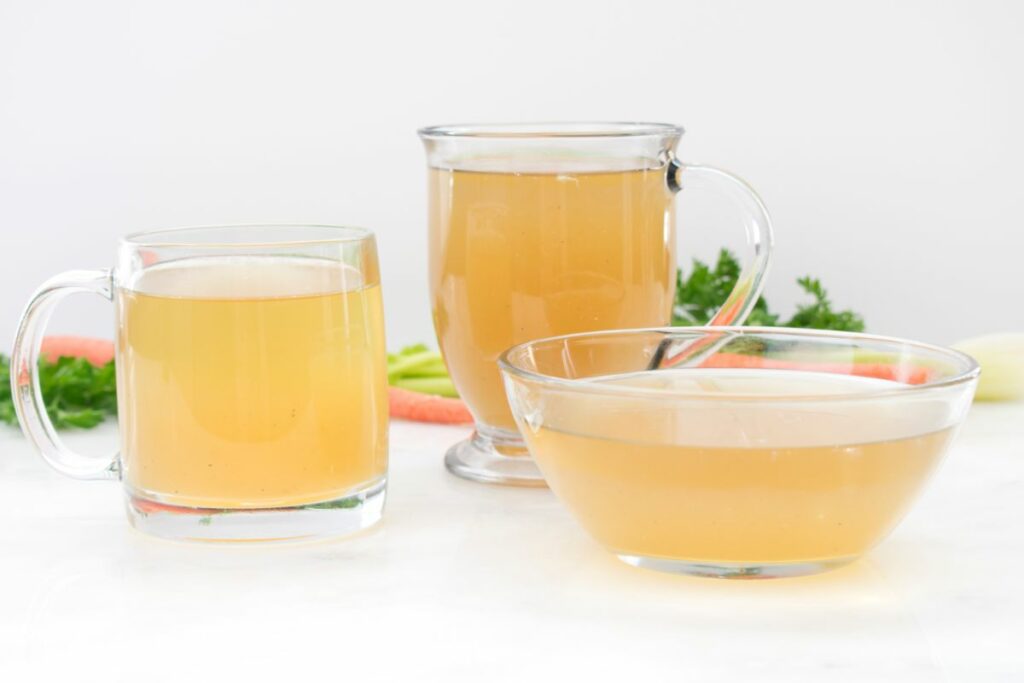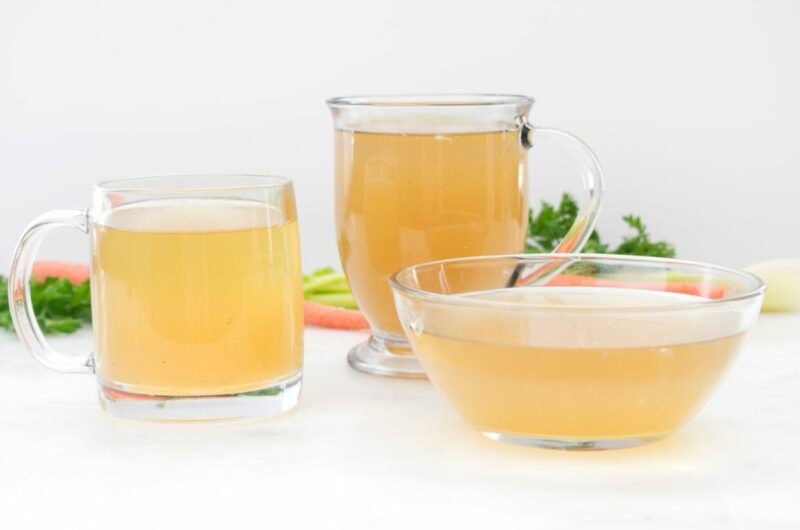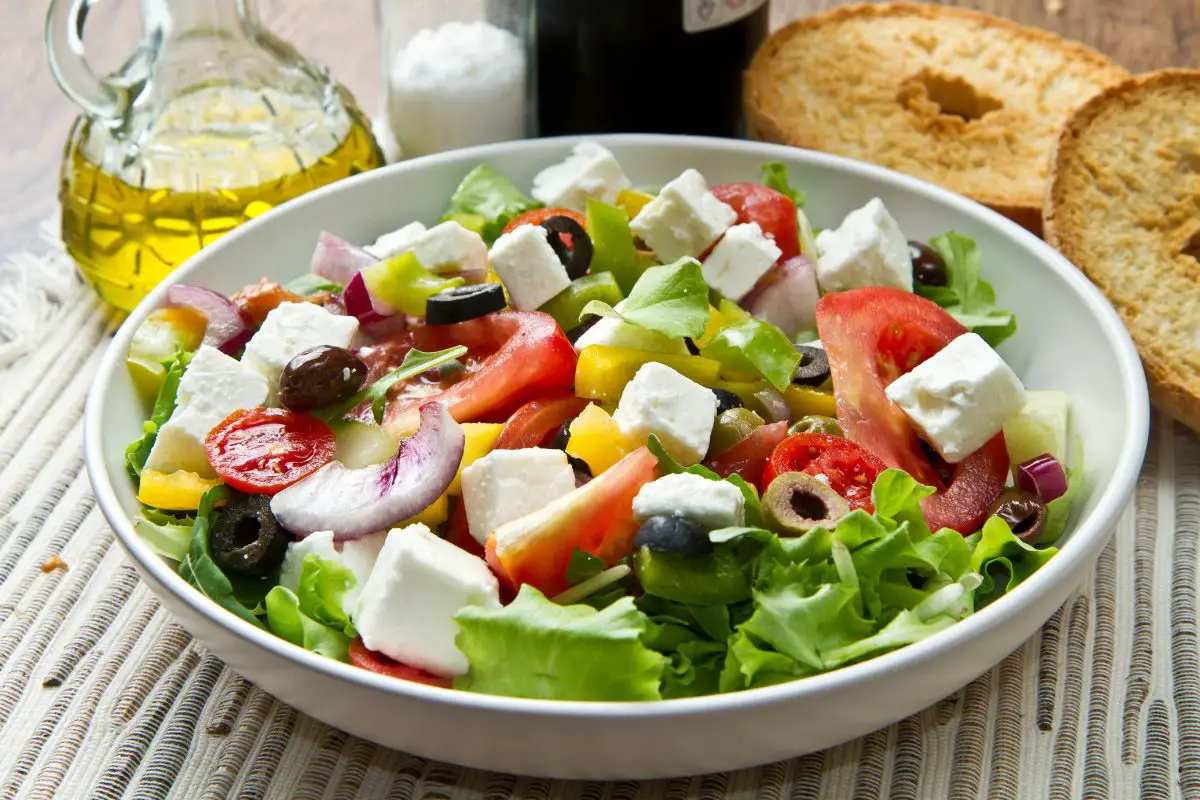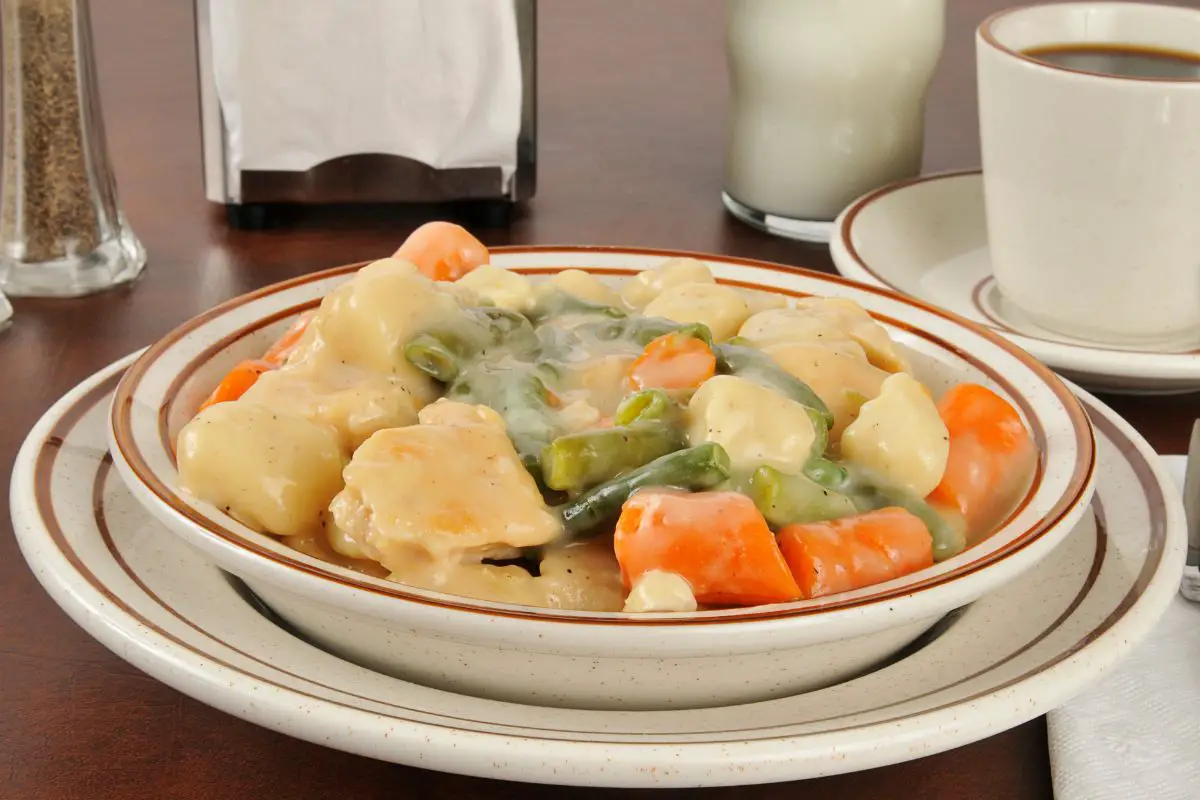The foundation of a great soup or stew often begins with a rich, flavorsome stock.
Renowned for her simplistic yet sophisticated approach, Ina Garten elevates the ordinary chicken stock into a culinary masterpiece.
Her recipe, deeply rooted in traditional cooking methods, showcases the transformative power of slow simmering and the harmonious blend of fresh ingredients.

Here, we will share exactly how you can recreate Ina Garten’s chicken stock at home.
If you’re vegetarian or vegan, don’t worry – we’ve snuck in a delicious veg stock alternative from the Barefoot Contessa, too!
1. Ina Garten’s Chicken Stock Recipe
Ina Garten’s Chicken Stock is a symphony of flavors meticulously crafted from simple, fresh ingredients.
This recipe starts with three robust, 5-pound roasting chickens, complemented by an array of unpeeled and quartered yellow onions, halved carrots, celery stalks with leaves, and halved parsnips.
The stock’s aromatic character is further enriched with fresh flat-leaf parsley, thyme, dill, and a halved head of garlic.
The magic unfolds in a 16- to 20-quart stockpot, where these ingredients are gently bathed in 7 quarts of water.
The essence of the stock lies in its slow simmering process, which lasts for about four hours.
This unhurried approach allows for a gradual melding of flavors, creating a depth and complexity that is simply unattainable in commercial stocks.
As the stock simmers, foam forms on the surface, which Garten advises skimming off to maintain clarity and purity in the final product.
Once cooled, the stock is strained, leaving a clear, golden liquid brimming with nuanced flavors and nutrients.
This homemade stock, or “liquid gold,” as Garten fondly calls it, serves as a versatile base for countless dishes, infusing them with a soul-warming essence that is the hallmark of truly homemade cuisine.
2. Ina Garten’s Vegetable Stock Alternative
For vegetarians and vegans, Ina Garten presents a delightful vegetable stock alternative that is both simple and robust in flavor.
This recipe uses a large onion, pre-peeled carrots, a celery stalk, a large leek, crushed garlic cloves, parsley, thyme, tarragon, a bay leaf, Himalayan rock salt, and black pepper.
The process begins with placing all these ingredients in a large pot and then bringing the mixture to a boil.
After reaching a boil, the heat is lowered to allow the pot to simmer gently for about 45 minutes.
This simmering time is crucial for the herbs and vegetables to infuse the water, creating a rich and aromatic stock.
Once the stock is done simmering, it can cool down before being strained. This step is vital to achieve a clear, pure vegetable stock.
Finally, the strained liquid is transferred into refrigerator-safe containers for storage.
This vegetable stock is a flavorful, plant-based alternative to chicken stock, perfect for adding depth and richness to various dishes.
The Best Ways To Use Ina Garten’s Chicken Stock
Chicken stock, with its rich flavors and nutrients, is a versatile ingredient in the kitchen.
It can be used as a base for soups, stews, and risotto or to add depth to sauces and gravies.
The stock also works wonderfully in braising, lending moisture and flavor to meats and vegetables.
In dishes like mashed potatoes or rice, substituting water with chicken stock can elevate the taste significantly.
One of the classic uses of chicken stock is in making comforting soups.
Whether a hearty chicken noodle soup or a creamy vegetable puree, the stock provides a flavorful foundation that ties all the ingredients together.
In stews, it helps tenderize meat over slow cooking while infusing the dish with a rich, savory essence.
Chicken stock is also a secret weapon in preparing risotto.
Gradually adding warm stock to the rice ensures a creamy, al dente texture while imparting a subtle yet distinct flavor.
Additionally, when making sauces or gravies, using chicken stock instead of water adds a layer of complexity and richness, enhancing the overall taste profile of the dish.
Beyond these traditional uses, chicken stock can be a base for cooking grains like quinoa or bulgur, offering an added dimension of flavor.
It’s also excellent for deglazing pans, capturing the caramelized bits from seared meats or vegetables, and turning them into a delicious sauce.
Top Tips For Making The Best Chicken Stock
- Choose the Right Chicken: The quality of your chicken is paramount. Opt for fresh, organic roasting chickens if possible. These chickens have more meat and bones, contributing to a richer and more gelatinous stock.
- Don’t Skimp on Freshness: Fresh vegetables and herbs are crucial. They not only enhance the flavor but also add essential nutrients to the stock.
- Keep the Skins On: When preparing your vegetables, keep the skins on where appropriate. The skins of onions, carrots, and garlic add depth of flavor and color to the stock.
- Use Cold Water to Start: Begin with cold water to ensure a clear stock. Cold water helps extract flavors and proteins slowly and evenly as the temperature rises.
- Simmer Slowly and Patiently: A gentle, slow simmer is key. Boiling the stock can break down proteins too rapidly, resulting in a cloudy and less flavorful stock. The slow simmering process, as Garten recommends, allows for the optimal extraction of flavors.
- Skim Regularly: Throughout the cooking process, skim off any foam or impurities that rise to the top. This step is crucial for achieving a clear and clean-tasting stock.
- Season Thoughtfully: Be mindful of your seasoning. Garten’s use of kosher salt and whole black peppercorns adds the right amount of flavor without overwhelming the natural taste of the stock.
- Strain Carefully: After cooking, strain the stock meticulously to remove all solids. This step ensures a smooth and clear stock, free of any bits and pieces.
- Cool Quickly and Store Properly: Allow the stock to cool down quickly to prevent bacterial growth. Once cooled, store it in the refrigerator if you plan to use it within a few days, or freeze it for longer storage.
- Experiment and Adjust: Don’t be afraid to adjust the recipe to your taste. Experimenting with different herbs or adding a bay leaf can personalize your stock.
By following these tips, you can elevate a simple chicken stock into a culinary treasure.
The difference lies in the details, and paying attention to each step will result in a stock that enhances any dish it’s added to.
How To Store Ina Garten’s Chicken Stock
Proper storage of chicken stock is essential to maintain its quality and extend its shelf life.
Once the stock is cooled and strained, it should be poured into airtight containers.
The stock can be refrigerated for up to a week for short-term use. Ensure the refrigerator is set at a safe temperature below 40°F (4°C) to prevent bacterial growth.
For longer storage, freezing the stock is the best option. It can be frozen in various portions, using ice cube trays for small amounts or larger containers for bigger portions.
This method allows for easy thawing and usage as needed.
When freezing, leave some space at the top of the container to allow for expansion as the liquid freezes.
Label the containers with the date, as chicken stock can be safely stored in the freezer for up to 6 months.
When ready to use, thaw the stock in the refrigerator overnight or use the defrost setting on a microwave.
Once thawed, the stock should be used within a day or two and should not be refrozen.
Final Thoughts
Ina Garten’s approach to making chicken stock, emphasizing simplicity, fresh ingredients, and slow cooking, epitomizes the art of creating foundational culinary elements that elevate everyday cooking.
The alternative vegetable stock recipe provides a wonderful option for those seeking a plant-based variant, ensuring that everyone can enjoy the benefits of a homemade stock.
Understanding the best ways to utilize chicken stock in various dishes and knowing how to store it effectively ensures that this culinary staple can be enjoyed to its fullest.
Chicken stock remains a key ingredient in creating delicious, nourishing meals, whether it’s used to enhance soups, stews, risottos, or even as a base for cooking grains.
Ina Garten’s wisdom in the kitchen teaches us that the best flavors come from the simplest ingredients and methods.
Frequently Asked Questions
Chicken broth is typically made from meat and may contain some bones, resulting in a lighter flavor. Chicken stock, on the other hand, is made primarily from bones and vegetables, giving it a richer, more robust flavor and a fuller mouthfeel.
Roasting chickens are often preferred for making stock due to their size and the flavor they impart. The bones of roasting chickens contribute to a richer and more gelatinous stock.
Yes, you can make stock from rotisserie chicken bones. They add a rich, roasted flavor to the stock and are a great way to utilize leftovers.
To make chicken stock taste good, use fresh ingredients, including vegetables and herbs, and simmer slowly to extract maximum flavor. Skimming off foam and fat during cooking also helps in achieving a clear, flavorful stock.
How To Make Ina Garten’s Chicken Stock (With Meal Inspiration And Top Tips)
Course: Ina Garten4
servings30
minutes40
minutes300
kcalDirections
- Choose a stock recipe
- Gather your ingredients
- Prepare your stock
- Store carefully.
Recipe Video
https://www.youtube.com/watch?v=ZUvISxXao-kVideo can’t be loaded because JavaScript is disabled: Cooking Ina Garten's Homemade Chicken Stock and Veal Meatballs + Becky's Lasagna Bolognese (https://www.youtube.com/watch?v=ZUvISxXao-k)- 16 Martha Stewart Baking Recipes You Have To Try - May 29, 2024
- 19 Of The Best Martha Stewart Cake Recipes Ever - May 28, 2024
- How To Make A Tasty Ina Garten Red Velvet Cake At Home - May 24, 2024












